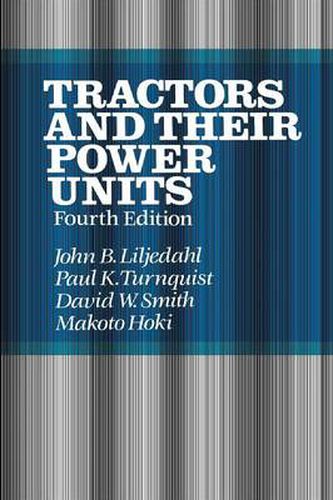Readings Newsletter
Become a Readings Member to make your shopping experience even easier.
Sign in or sign up for free!
You’re not far away from qualifying for FREE standard shipping within Australia
You’ve qualified for FREE standard shipping within Australia
The cart is loading…






This title is printed to order. This book may have been self-published. If so, we cannot guarantee the quality of the content. In the main most books will have gone through the editing process however some may not. We therefore suggest that you be aware of this before ordering this book. If in doubt check either the author or publisher’s details as we are unable to accept any returns unless they are faulty. Please contact us if you have any questions.
At the time of the writing of the fourth edirion of this textbook, the agricultural economy in the United States and Canada was depressed. The prices paid to farmers for their grain crops were very low, and consequently most farmers in North America could not afford to buy a new tractor when needed; there fore, the sales of tractors and other farm machines were much below normal. The farmer who was the victim of the depressed economy was forced to make do. Instead of purchasing a new tractor when the old one needed to be replaced, the farmer usually purchased a used or second-hand tractor or repaired the old one. In a strict sense, tractors usually do not wear out; instead, they become obsolete. The farmer who owns an obsolete tractor would prefer to replace it with one having more power, more speeds, more conveniences, a better hydraulic system, lower operating cost, or all of the above. But farmers in the United States, Canada, and other industrial nations will continue to want to purchase tractors that have all of the features, in cluding microprocessors, found on other vehicles.
$9.00 standard shipping within Australia
FREE standard shipping within Australia for orders over $100.00
Express & International shipping calculated at checkout
This title is printed to order. This book may have been self-published. If so, we cannot guarantee the quality of the content. In the main most books will have gone through the editing process however some may not. We therefore suggest that you be aware of this before ordering this book. If in doubt check either the author or publisher’s details as we are unable to accept any returns unless they are faulty. Please contact us if you have any questions.
At the time of the writing of the fourth edirion of this textbook, the agricultural economy in the United States and Canada was depressed. The prices paid to farmers for their grain crops were very low, and consequently most farmers in North America could not afford to buy a new tractor when needed; there fore, the sales of tractors and other farm machines were much below normal. The farmer who was the victim of the depressed economy was forced to make do. Instead of purchasing a new tractor when the old one needed to be replaced, the farmer usually purchased a used or second-hand tractor or repaired the old one. In a strict sense, tractors usually do not wear out; instead, they become obsolete. The farmer who owns an obsolete tractor would prefer to replace it with one having more power, more speeds, more conveniences, a better hydraulic system, lower operating cost, or all of the above. But farmers in the United States, Canada, and other industrial nations will continue to want to purchase tractors that have all of the features, in cluding microprocessors, found on other vehicles.